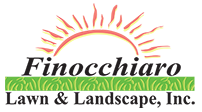Fall Service Bulletin
Your Fall Treatment provides the following:
o A special Fall fertilizer to help your lawn recover from the Summer stress period by strengthening the grass plants from the roots up. This root-building fertilizer will stimulate the grass plants to produce rhizomes and tillers, which will fill in the thin areas of your lawn. It will also stimulate the newly seeded areas to fill in more rapidly. Our company performs soil testing to determine your lawn’s nutrient levels and design our custom-blended fertilizer to fit your lawn’s requirements.
o Spot-seeding and tool spiking is performed in bare or thin areas. Seed blended for sunny or shady areas right on the job.
o Liquid Weed Control is spot-sprayed only where weeds are present and is not broadcast over the entire lawn. A sticking agent is added so that if a rainfall comes after the treatment, the control will still be effective.
o Insect Control includes spot treatment where insects, especially grubs, are still actively feeding.
o Post-Emergent Controls for crabgrass, dallisgrass, foxtail, green kyllinga, nimblewill, nutsedge, stiltgrass and thistle are spot-sprayed as needed.
** Extra Work (extra seed, core aeration, rolling, seed aeration, soil stabilizer, thatching , topdressing and verticutting) is performed as needed and is an extra charge.
WATERING PROCEDURES
1. Wait 12 hours after your lawn services is completed then, if possible, give your lawn a good soaking to water the products into the soil before mowing the lawn.
2. Since fungus and high humidity are not as much of a problem in the Fall, watering may be done in the morning, afternoon or evening—though watering in the morning is still preferred.
3. If there is no measurable rainfall, watering two times a week during the first month should provide an ample supply of water on an established turf.
4. On bare or thin areas of your lawn — or where thatching or topdressing and seeding has been performed — light frequent watering at least once a day, twice a day when possible, is advisable for the first month. This will allow these areas to fill in as soon as possible. After the first month of growth, you can decrease the frequency of watering while still trying to keep the soil as moist as possible by providing deep soaking waterings at this time.
5. For our customers who have a sprinkler system, you will need to water three times a week because of the amount of time needed to ensure that each zone is properly watered. On bare or thin areas where seeding has been performed, program those zones to water lightly at least once a day, twice a day when possible, for the first month. Please do not set the system to water on the day your lawn is scheduled to be mowed. Do not have your sprinkler system winterized before November 15th. If you have any additional questions, a sprinkler system bulletin is available upon request.
MOWING PROCEDURES
1. Wait at least 24 hours after your lawn service is completed to mow your lawn.
2. Use a sharp blade.
3. Mow with regularity, except in bare areas that are being reseeded where you should allow 3 to 4 weeks before cutting to help the new seedlings establish themselves.
4. Mow at the proper height — Please continue to mow at 3 or 4 inches for regular-sized lawns and 4 to 4-1/2 inches for larger lawns until such time as cool weather sets in. Then mow at 3 inches. Mowing at the proper height will increase root depth and retain moisture longer helping to reduce weed and disease development. If you have someone mowing your lawn for you, please make sure to tell him/her to continue to mow at these mowing heights until such time as cool weather sets in, when he/she can move the mowing height to 3 inches.
5. Continue to recycle or mulch clippings, until such time as the leaves start to fall heavily. At that time, we would recommend bagging the clippings, which will remove the leaves at the same time.
6. Alternate mowing directions so both the established turf and especially the new seedlings do not start growing in only one direction.
7. Try to mow your lawn only when it is completely dry. It will be easier on your grass, on your lawn mower and on you.
LEAF REMOVAL
The easiest and safest way of removing leaves from your lawn is to remove them with a lawn mower bag while cutting. For heavier amounts of leaves, raking is not a problem on established turf. But on newly seeded, shady or shallow-rooted areas, heavy raking may remove new seedlings as well as the established turf. A suggestion might be to either rake these areas lightly, or (if you have one) to use a leaf blower that would remove the leaves off the weak areas on to the established turf, driveway, street or sidewalk where they can be raked into bags.
